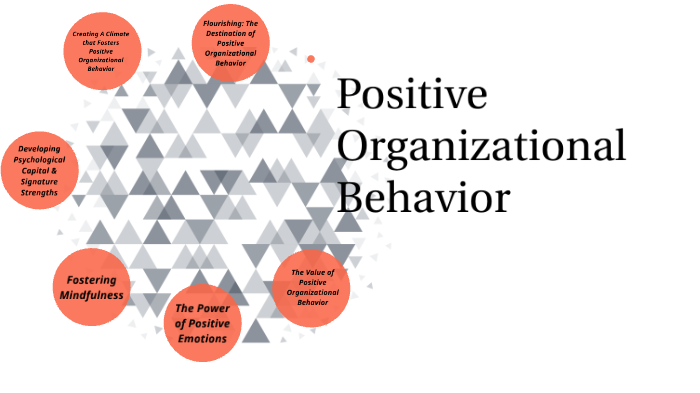The term time management became
familiar in the 1950s and 1960s as referring to a tool to help managers make
better use of available time. The tool was based on practical experience, in
the form of dos and don’ts. The term appears to indicate that time is managed,
but actually, activities are managed over time. Time management is
self-management with an explicit focus on time in deciding what to do; on how
much time to allocate to activities; on how activities can be done more
efficiently; and on when the time is right for particular activities. Much of
the advice on time management concerns the standardization and routinization of
activities to increase efficiency. The time gained with this increased
efficiency can be used for other activities, deliberately chosen as worthwhile,
rather than activities that serve only as a means to achieve less worthwhile
goals, so-called time wasters. In other words, time is gained for activities
that deserve it, and full concentration can be devoted to these activities for
a longer period.
Wednesday, December 9, 2020
Time Management
Tuesday, June 30, 2020
Competency Mapping
Competency Mapping is a procedure of distinguishing key abilities for an association as well as an occupation and fusing those skills all through the different procedures (for example work assessment, preparing, enrollment) of the association. A competency is characterized as a conduct (for example correspondence, initiative) instead of an expertise or capacity.
The means associated with competency planning with an aftereffect of occupation assessment incorporate the accompanying:
1. Lead work examination by requesting that occupants complete a position data survey (PIQ). The PIQ can be given to officeholders to finish, or you can lead one-on-one meetings utilizing the PIQ as a guide. The essential objective is to assemble from officeholders what they feel are the key practices important to play out their separate employments.
2. Utilizing the aftereffects of the activity examination, you are prepared to build up a competency-based expected set of responsibilities. This is created via cautiously examining the contribution from the spoke to gathering of officeholders and changing over it to standard capabilities.
3. With a competency-based set of working responsibilities, you are en route to start planning the abilities all through your HR forms. The skills of the particular set of working responsibilities become your variables for appraisal on the presentation assessment. Utilizing capabilities will help direct you to perform increasingly target assessments dependent on showed or not showed practices.
4. Making the competency planning one stride further, you can utilize the consequences of your assessment to distinguish in what capabilities people need extra turn of events or preparing. This will assist you with concentrating your preparation needs on the objectives of the position and friends and help your workers create toward a definitive accomplishment of the association.
Monday, June 29, 2020
Job Enrichment Vs Job Enlargement
Job Enlargement – It is a
technique of job design, in which the number of tasks associated with a job is
increased to add greater variety to activities, thus reducing repetition. It
refers to having additional duties and responsibilities in a current job
description. And we can say that job enlargement is a horizontal expansion of
duties and tasks across the same organizational level.

Example – A person hired to handle the customer care executive
work is responsible for handling customers inquiries, queries, and calls.
She/he kept on doing the same work for two years and got bored. She/he
discussed the problem with the HR manager, who planned to implement job
enlargement for making her/his profile interesting. A few more tasks were added
to her/his job profile like interacting with the client, and making outbound calls to create new
customers for the company. So these added tasks reduced her/his repetition.
Job Enrichment – It is that
motivational tool that allows more decision making power and work-related
authority to the employees. It is the vertical expansion of roles,
responsibilities, authority, and activities along with the different
hierarchical levels. We can say that it means, or an increase with the help of
upgrading and development.

Example – A human resource executive was initially responsible
for maintaining the employees' records and calling the candidates for
interviews as directed by the HR manager. To add more value to the HR
executive’s job profile, the manager gave her/him some authority related to the
work already assigned to her/him. The new responsibilities included providing
the employees’ provident fund details to the accounts department, keeping
contact with the provident fund office, and initial scrutinizing of the
candidates for the interviews. These additional duties hold authority and
accountability, making the employee more efficient, assertive, and satisfied
with the job.
Thursday, June 11, 2020
Are Leaders difference from Managers?

Emotion and Emotional Intelligence
- Thought : in term of evaluating stimuli and situation:
- Action : in terms of a arousal and movement,
- Motivation : in term of behavior intentions or behavioral readiness
- Subjective feeling state

Consider the role of emotions a work. Both, positive as well as negative emotions arise as the person interacts with situations and other at work. However, the individual is likely to be effective in the organizational or work context if that person can highlight those emotions that help achieve desirable outcomes, and avoid the negative influence of emotions on the work outcomes. if emotions are managed effectively, this can be achieved. The management of emotions requires several skills, but if cannot be measured using the conventional IQ tests as they focus on the cognitive skills.
Team Leadership

- Leaders facilitative the shaping of a collective vision through the active role of team members, who are themselves very highly skilled and qualified and capable of envisioning.
- Leaders are expected to facilitate the team in arriving at its own solution rather than solving their problems.
- In cross-functional teams, leaders understand and manage the diversity and the quality of relationships between the team members and the functional superior of these team members.
Wednesday, June 10, 2020
Motivation

- Trait measurement is not error-free.
- The impact of a personality trait on the behavioral outcomes cannot be guaranteed because it is moderated by other variables. These moderating variables could be factor related to the nature of the task, other people around the person and the organization. Take the example of the conscientious factor, which has the strongest predictive link to performance among all Big five factors. If a person has a high score on conscientiousness, but has low skills, then the performance is negatively influenced. Further, a highly conscientious person with very high striving for achievement, is likely to be overcommitted to the decision even when early signs of a likely failure appear. When this happens, rather than quitting with minimum loss, over committed persons continue and face greater loss. This phenomenon is known as Escalation of commitment.
Wednesday, May 27, 2020
Culture in an Organization


- It is historically determined on the basis of transactions between people, given a context, in the sense that no culture can be planted in one day.
- It is related to anthropological concepts, in the sense that culture in an organization is not free from the influence of the national culture. In fact, national culture is believed to have a more powerful impact on behavior than the organizational culture.
- It is social constructed, in the sense that culture cannot be a product of a single person's efforts or perceptions.
- It's soft and it's difficult to change
Positive Organisational Behavior

According to the study of researchers, identified five positive element in the approach to OB currently: Confidence, Hope, Optimism, Subjective well-being and Emotional Intelligence. These five elements are relatively new entries in the mainstream literature on OB, though many concepts have been around in some other form for quite some time. If I talk about the concept of self-efficacy is quite old, and is related to confidence. Subjective well-being is studied as related to attitudes, especially, job satisfaction. Though Hope and Optimism are different concepts, they can be related to each other closely but, in term of the network of their meanings and emotional intelligence is also discussed quite comprehensively from the perspective of personality as well as leadership.
Sunday, May 24, 2020
KARMAYOGA

- This nation derives from another concepts of duty: doing those tasks about which one has positive beliefs (good to do, should do) but negative affect (disliked).
Organizational Behavior of Managerial Responses to Environmental Trends and Challenges

- Communication and open sharing of what is happening and what should be done.
- Setting realistic goals in the correct direction and suitable, fair reward system.
- Focusing away from remaining in power towards remaining relevant and making valued contributions.
- Adapting managerial perception and attitudes to adapt better to changing contexts.
The Disciplines Contributing to the Knowledge of Organizational Behavior

Organizational Behavior is a relatively new field of study. The body of research in this field has been continuously growing over the year. OB also draws from many other fields of scientific study, especially the humanistic discipline such as Sociology, Psychology, Economics, Political Science as well as Anthropology. Our understanding of OB today is a rich complex of the fundamental orientations of these disciplines.
For example, Sociology is concerned with the study of groups, and how membership of formal groups affect the behavior of people. Psychology enrich OB by explaining how the mental functions of a person, including the physiological and neurological processes, affect human behavior. The Economics perspective views all human behavior as a relationship between limited means and their alternative uses, and after all the work organizations are system created for business, even if not-for-profit. Since organizations are made up for multiple groups, a Political Science perspective is critical in understanding OB. Specially, political science helps understand how power for decision- making and action is allocated and transferred across diverse groups and Lastly, Anthropology traces the evolution of human behavior over a long term and its branches like cultural anthropology studies the differences in human behavior across cultural groups.

Saturday, May 16, 2020
Corporate Social Responsibility
Why Corporate Social Responsibility (CSR) is Important for a Business?

Tuesday, May 12, 2020
Time Management
The term time management became familiar in the 1950s and 1960s as referring to a tool to help managers make better use of available time. T...

-
The term time management became familiar in the 1950s and 1960s as referring to a tool to help managers make better use of available time. T...
-
According to the study and application of positive oriented human resource strengths and psychological capacities that can be measured, deve...
